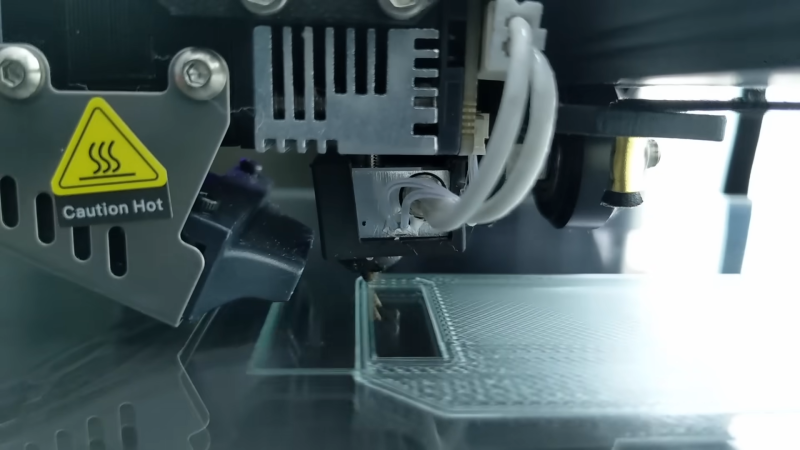[porchlogic] had a problem. The desire was to print a crystal-like case for an ESP32 project, reminiscent of so many glorious game consoles and other transparent hardware of the 1990s. However, with 3D printing the only realistic option on offer, it seemed difficult to achieve a nice visual result. The solution? Custom G-code to produce as nice a print as possible, by having the hot end trace a single continuous path.
The first job was to pick a filament. Transparent PLA didn’t look great, and was easily dented—something [porchlogic] didn’t like given the device was intended to be pocketable. PETG promised better results, but stringing was common and tended to reduce the visual appeal. The solution to avoid stringing would be to stop the hot end lifting away from the print and moving to different areas of the part. Thus, [porchlogic] had to find a way to make the hot end move in a single continuous path—something that isn’t exactly a regular feature of common 3D printing slicer utilities.
The enclosure itself was designed from the ground up to enable this method of printing. Rhino and Grasshopper were used to create the enclosure and generate the custom G-code for an all-continuous print. Or, almost—there is a single hop across the USB port opening, which creates a small blob of plastic that is easy to remove once the print is done, along with strings coming off the start and end points of the print.
Designing an enclosure in this way isn’t easy, per se, but it did net [porchLogic] the results desired. We’ve seen some other neat hacks in this vein before, too, like using innovative non-planar infill techniques to improve the strength of prints.
Thanks to [Uxorious] and [Keith Olson] for the tip!















https://fullcontrol.xyz/#/models has been doing stuff like this for a while. Wondering why they didn’t slow the print down to go for a glass effect for the whole print with the petg?
I’m not very experienced at FDM printing, but can’t you just increase the retract amount to avoid stringing?
Then you get goo collecting on the inside of the heat break, eventually leading to a feed jam and a mess to clean.
I’ve been trying clear polycarb.
Not great, needs postprocessing.
More translucent than clear.
But big nozzles backordered, haven’t given up.
Also polycarb is hard, needs lots of clamping force or extruder slips, then gears cut filament.
In theory, yes.. In practice? Tough, especially if your printer has some miles on it and you’re printing a more challenging material like PETG. Also continuous path has other advantages, like speed and part strength.
Didn’t watch the video, but it could be explained in the article: Whats the difference to vase mode?
Vase mode requires a single closed contour. With this approach you can have much more complex geometry and still be able to print in one go.
I do that myself a lot, too. Also using Rhino and Grasshopper. I have to contact that guy. :)
I published my self build toolkit “Ouroboros” for Grasshopper a few years ago. It stitches together all the contours.
https://daniel-westhof.de/code/Ouroboros/
I wish there were more slicer features to try to do this without resorting to vase mode or else getting into custom gcode territory. Does anybody know about some nifty tools for that?
the software behind this is a tool for what you’re wanting to do. https://fullcontrol.xyz/ all of the models on that page are generated with you controlling the print path.
Download from github: https://github.com/FullControlXYZ/fullcontrol
There was also this technique from a few years ago where you bake your final print into fine salt to have the layer melt together.
https://hackaday.com/2020/09/23/reforming-3d-prints-with-salt-and-heat/
Probably harder though.